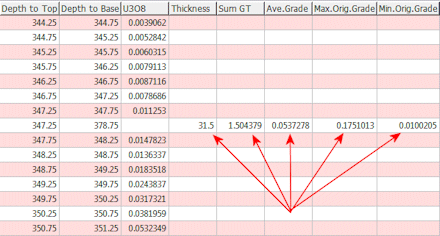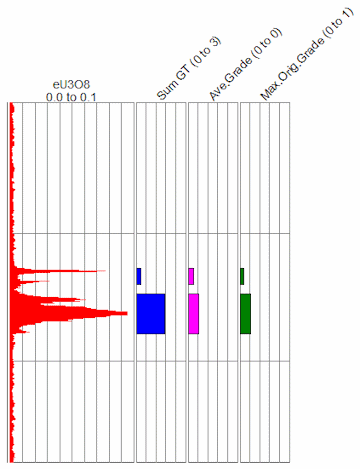

This program reads a column of I-Data that represents grade values (e.g. eUranium) and computes a variety of GT (grade x thickness) statistical information based on user-defined minimum grade and maximum waste-thickness cutoff values.
The output from this program may be stored within an Excel-compatible CSV file, I-Data columns, or a special XYZ file that may be used for subsequent point-mapping and/or contouring.
Feature Level: RockWorks Standard and higher
Menu Options
Step-by-Step Summary

! You can define the I-Data output columns before this program is used. Or you can click on the button to the right to display the I-Data Types Table where you can add new columns.



The program will read the contents of the input I-Data track, determine for each borehole the areas where the minimum grade and maximum waste parameters are met, and determine the thickness of those zones or intercepts.
The program will record the computations in the requested output reports: Excel CSV and/or I-Data columns and/or XYZ file (you can choose as many of the output options as you like).
Here is an example of how the Sum GT, Average Grade, and Maximum Original Grade computations recorded in the I-Data table could be plotted with the original grade data in a striplog.

![]() Back to I-Data Menu Summary
Back to I-Data Menu Summary